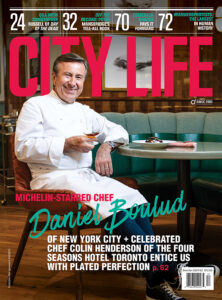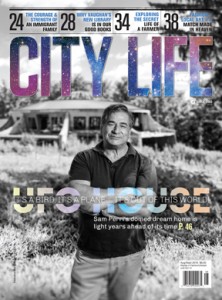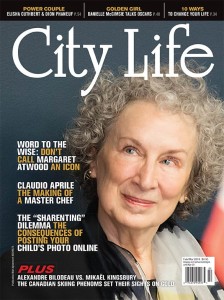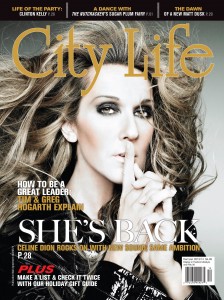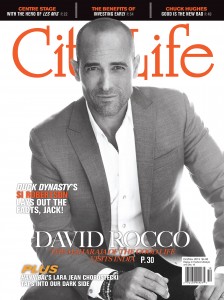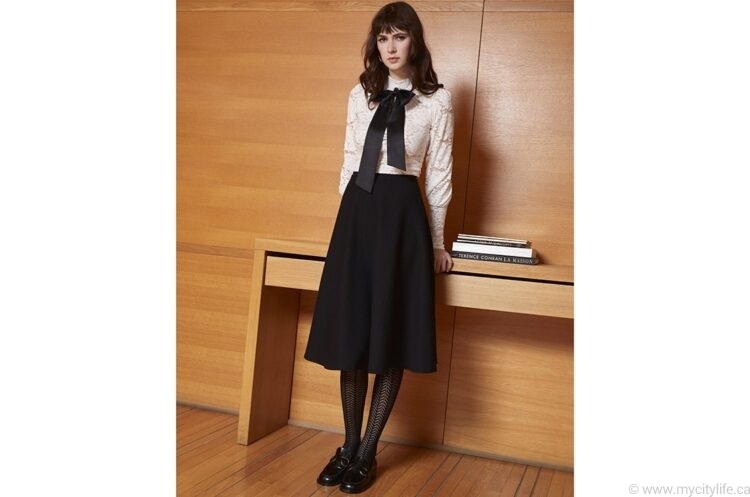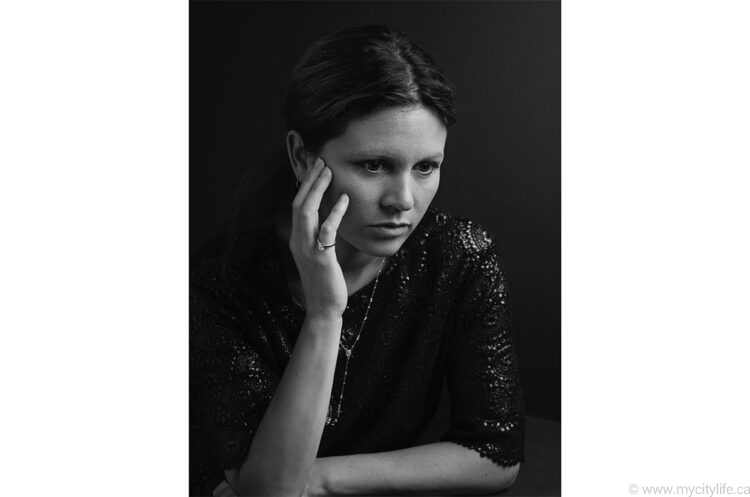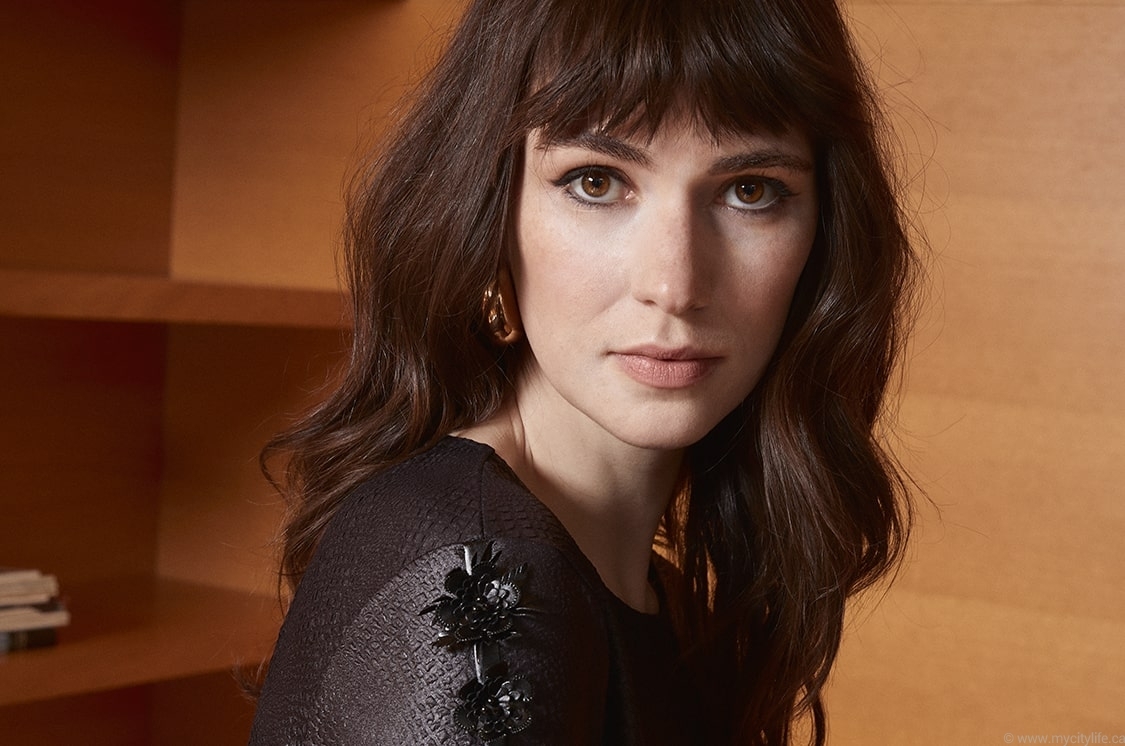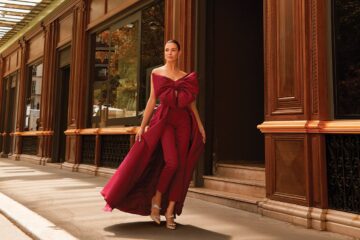Nadya Toto: Canada’s Knitwear Revolutionary
For more than 30 years, Nadya Toto has been the creative force behind her fashion brand, Nadya Toto, which illustrates her inventive and flexible approach to knitwear through quintessential Italian style inspired by her grandmother.
We spoke with the Canadian fashion designer from her atelier in Montreal, broaching topics such as how her Italian grandmother, whom she calls “the goddess of the sleeve,” has greatly influenced her collections, her fascination with Valentino and Missoni starting from an early age, dressing stars such as Angelina Jolie and the power of thinking simplistically.
Q: Your clothing celebrates femininity, while combining both comfort and refinement. Have you always wanted those qualities to come through in your style?
NT: It really started when I was young, when I was home. My parents were working, and I was always with my Italian grandmother. My grandmother actually had a house of couture in Italy, in the ’30s, the ’40s. And she came here, and she taught me what was refinement by doing incredible things, handmade, just out of the ordinary, very beautiful things. It all started there.
Q: Can you tell us what your nonna was able to teach you that you weren’t able to learn in school?
NT: To me, she was the goddess of the sleeve because, in the early days, the jacket, if you look at the ’30s and the ’40s, the women’s jackets were so well-constructed; the shoulder pads were very particular after the Second World War. She used to dress the German soldiers’ wives in Italy, during the war, even after the war. Those jackets, like you see in the movies, were so perfect. She taught me the sleeve. Th e sleeve is something that not many people can master. Not even at school, believe me. Even today, it’s still a big challenge for me, and I always rework it, rework it until it’s … is it perfect? I don’t believe in that. I try and that, to me, is the first thing that I remember.
She was a bit of a rebel. If you would say “white,” she would say “black.” She was always the opposite of everything — a rebel, I guess. She used to cut in the fabric with no pattern, and I’m like that. When I do my collections, I don’t make the patterns. You usually are supposed to make a pattern right away. I open my roles and I just cut. It’s a little crazy, so she taught me that.
Q: What did your path look like in becoming a designer? Did you always know you wanted to pursue this while you were in school? Was your family supportive?
NT: I have an artistic family. In some ways, everything was homemade. My father was an engineer and made everything with his hands. He built our country home; it took him 20 years. My mother is a ceramic artist. She does ceramic art, and, so, my whole family, even the lampshades were made in crochet, everything you could imagine, so I grew up in that surrounding, and, I guess, a big influence for me on my future. I guess they helped me very much, not financially. I started from scratch.
Q: You say that when you were a teenager, your room was covered with photos from the collections of Valentino and Missoni. There’s obviously a clear pattern with those designers; they have the knitwear and the jacquard. Was that something that you were drawn to because of your grandmother?
NT: I think so, yes. She always made things not in the norm. She would cut special cuts. For example, she would cut a jacket and she would make one side of the collar as a normal collar, and the other one she’d go wider. She was very not of her time, avant-garde. I love that, and that’s what made me be different. Missoni was a big influence, still is a big influence, for me. I always believed it.
I remember when I did my first show in 1989. I remember I had done some jackets, because you’d actually go with “la société,” you go with what’s in the trend, what’s in. And at that time, jackets were so in, very constructed, shoulder pads. I remember doing my first collection, but it wasn’t me.
Then, in 1990, I did fashion week in Toronto and I did knits, and buyers did not understand, believe me. They didn’t get it. Everyone was so structured, and then I come out with a collection full of knits that I weaved here in Montreal and I continue doing that. So, I could say that I am the revolutionary Canadian designer in knitwear in the ’90s, for sure, and I still am. And more and more, I started to abandon the structure, the jackets, the pants — it was not for me. So, I think, the important thing is to continue to do what I love and what my heart says. I don’t look at other collections.
Q: Can you speak on the “zero kilometre” concept and how this contributes to your company acting sustainably?
NT: We all need to work for a better world. We have to be more conscious. A lot of people are not conscious enough these days. It’s one, it’s a lot of things; it’s not just one thing. I do try my best for our environment here at the atelier. I’m close to Charbonnel, so everyone is around here, so everything is made here. I believe in that so much, and I always did. Today, I can see the demand, also from the buyers and stores, to buy Canadian.
Q: Can you also tell us about the scrapping process that you’ve implemented?
NT: Yes, we used to throw out our fabrics. There are so many scraps. So now I’m helping out these young designers that make recycled collections.
Q: How has the pandemic affected your business, as well as your views on life?
NT: At the beginning, I felt a little anxious because it was an unknown for everybody. We didn’t know what was going to happen to the world … That being said, it gave me an incredible energy of survival, in a way. With that energy, we have done spectacular things that I’ve never done in my 32- year [career]. I am very excited for our spring/summer 2022 collection. We worked harder because of that energy, so it made us evolve even faster. We created incredible things we haven’t done in the past. The online business boomed unexpectedly. We are shipping everywhere around the world … from Russia, to Australia, to Japan, everywhere. Everywhere. It just fell from the sky. I haven’t taken a day off in two and a half years, even on weekends. The pandemic was really positive for us. I think it was a good reflection for many people all over the world — it was a reflection.
Q: What makes you proud to be a Québécois designer?
NT: My brand was created here, and I always believed in it. I’ve grown, and, yes, I’m very proud because I’m made here. This is who I am. Mind you, I go to Italy, and they call me “the American,” and then when I’m here, they call me “the Italian.” So, I don’t know where I belong anymore. Most of all, I’m proud of the trust that I have with my stores and all these years. I’ve been selling to these stores for many, many years that are still around, and that’s so beautiful.
Q: You said that to stay small but united, that’s the key to becoming “rich.” Can you expand on this idea and what it means to you beyond the clothing world?
NT: When people actually physically come into my atelier, they come and they’re like, “Well…,” and I say, “We’re small, but we’re big.” I think that it’s my motto, like everyday I think like that … because when you think simplistically, and you appreciate every small thing, then every big thing happens right after. And I always thought like that. I never thought of becoming somebody else I’m not. And we do one piece at a time, and I think we enjoy what we do. We’re a small team and we love each other. And we come in and we smile because life is about the small moments — that’s all it is. They’re the most precious things. Every small thing is important to me. Think small, I believe in that.
Q: How would you describe your own style?
NT: Black, black, black. I would say I’m erased from what I make. It’s very profound. I need to be a blank canvas. When you’re a true curator, you have to disassociate a bit. I dress a lot of important women, and they tell me, “How come you’re not wearing one of your dresses?” And I say, “How can I wear my dresses when I’m working? I’m full of holes on the cutting table.”
Q: What do you believe are the skills to become a successful designer?
NT: The first thing would be to have lots of talent, that’s important. Second of all, if you want to be a creator — because, to me, a designer is a creator — you have to make sure to create a product that you don’t see elsewhere because the world is full of too much clothing, everywhere. I always say to these young designers out there, “For you to succeed, you have to make a collection that’s true to you and not seen around … Today, if I open a store, and I’m a buyer and I have a big budget, it’s my choice to buy anyone I want in the world, so why would I choose you?” That’s what I would tell a young designer.
Q: What does style mean to you?
NT: Style to me is personal. I think, today, women are unique. It’s the way you see it interpreted. Even though I show femininity and refinement, I dress the women of the world, and so I see all kinds of women wearing that one dress. You would see it so different on so many different women, and that’s extraordinary because it’s their personality and their way of showing it.
Q: Who are some women you’ve had the pleasure of dressing?
NT: Just recently, I love dressing Hélène Florent. She’s an actress from Montreal. She’s going on the red carpet soon, but she’s an incredible true actress. Angelina Jolie is the same thing. When they’re not acting, they’re a completely different person. They’re so natural, no makeup, so beautiful. I love that aspect, and I love dressing Hélène, and it reminds me of Angelina, too, because I love her simplicity.
Q: What is the definition of success to you?
NT: Failure.
Q: What is your morning routine?
NT: Feed the dog. Take the dog out. Make breakfast for my daughter, make breakfast for me and bring my daughter to the train station because we live in the woods. I built my house in the woods, during COVID-19. And then I’m at work; I start at 7:15 a.m.
Q: Did you move from the city to the country?
NT: I did, I did. One of my dreams was to design my house in a forest and, three years ago, I found the forest on the Island of Montreal. I’m still on the island, but I’m far away, near the water. So, I actually built the house that I designed.
Q: What’s your favourite beauty product?
NT: Armani silk foundation. The quality is incredible.
Q: Where do you love to travel?
NT: Besides Italy, Italy is my favourite. My family and I have a house in Abruzzi, on the water side, and so that is my favourite of all, and my second favourite is Antigua.
Q: What’s one place you love in your city?
NT: Il Cortile, because it reminds me of Italy. It’s right in the heart of downtown Montreal.
Q: What is the definition of happiness to you?
NT: To love. The four-letter word. LOVE. To love.
INTERVIEW BY ESTELLE ZENTIL



















